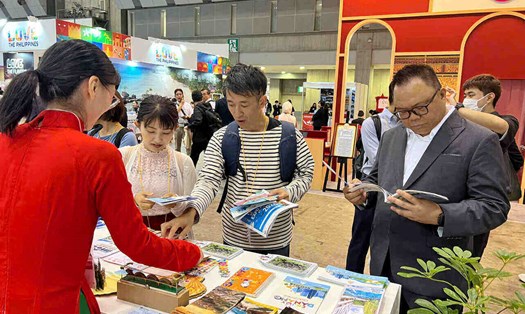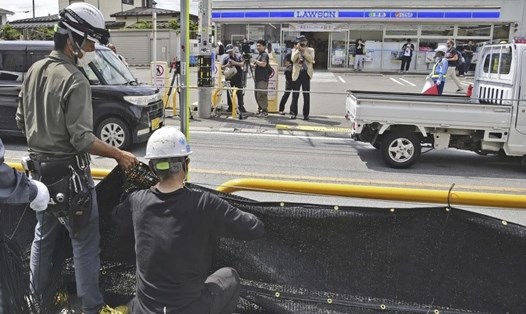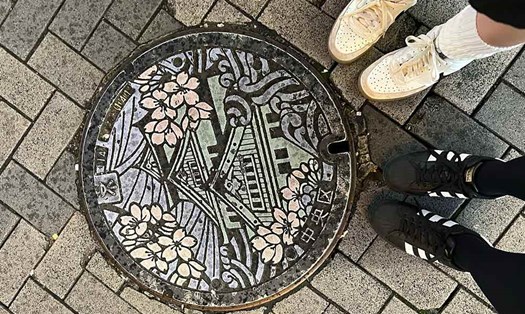In world history, Hiroshima is known for the atomic bombing during World War II. However, after nearly 80 years, this place has become a large urban area in the Chugoku region of Japan and is increasingly becoming a tourist destination because of its historical value and cultural depth.
In addition to the Golden Route (Osaka - Kyoto - Nagoya - Tokyo), which is a "classic" tour in Japan, the new discovery route to Hiroshima is a suggestion for many tourists visiting Japan for the second time or more. In particular, there is now a direct flight from Hanoi to Hiroshima with 3 flights a week from November.

Ms. Matsumoto Fumi, Chief Representative of the Japan National Tourism Organization (JNTO) in Vietnam, revealed at a seminar with Hiroshima Prefecture held in early October: “In recent years, the number of Vietnamese visitors to Japan has increased every year. The figure in 2023 was 573,916 people, surpassing the highest record in history. The number of Japanese tourists from Vietnam as of August 2024 has reached 434,000 people. In this direction, we predict that the number of visitors this year will continue to break last year's record.”
Ms. Matsumoto Fumi added that the current main tourism product in Vietnam is still the Golden Route, the Vietnamese market still does not know much about the attractiveness of Japanese localities. Through the new Hanoi - Hiroshima route operated by Vietjet, JNTO in Vietnam hopes to promote the Chugoku region.
“Hiroshima is a fascinating city with Miyajima as well as beautiful natural scenery and historic streets,” Ms. Matsumoto emphasized.
Mr. Kobayashi, Deputy General Manager of Hiroshima International Airport, said that when coming to Japan for the first time, international tourists often take the Golden Route through places such as Tokyo, Osaka, and Kyoto.
“I hope that tourists will choose Hiroshima - Setouchi as their second destination to visit Japan, and will use the direct flight from Vietnam to Hiroshima via Hiroshima airport,” he said.
From Hiroshima, visitors can easily travel to Osaka. If traveling by Shinkansen, it only takes 1 hour and 30 minutes, and 5 hours and 20 minutes by bus. Famous places in Hiroshima include Peace Memorial Park, Itsukushima Shrine on Miyajima Island, Senkoji Temple, and Takehara Old Town. The Shimanami Sea Road is suitable for tourists who love cycling, and can take a bicycle tour through places such as Ikuchi Island, the lemon garden, Kousanji Temple, and Hope Hill.
Oysters are one of Japan's most famous seafood dishes, and few people know that Hiroshima accounts for 60% of its production. Hiroshima oysters have a rich and succulent flavor, and are best enjoyed in winter, with many ways to prepare them such as raw, deep-fried, stewed, or steamed with rice.

From Vietnam, visitors will fly directly from Hanoi to Hiroshima and stay here for two days, passing through key points such as the atomic bomb ruins, the Atomic Bomb Museum to better understand the historical story of World War II, the Peace Memorial Park and Miyajima Island - home to Itsukushima Shrine recognized by UNESCO as a World Heritage Site.
On the third day, visitors can travel to Takehara old town, Okayama Korakuen garden - known as one of the three most beautiful gardens in Japan, Himeji castle is Japan's first World Cultural Heritage.
On the fourth day, the itinerary could be to go to Kobe to eat beef and seafood; watch a Sumo show in Osaka. Finally, fly back to Vietnam from Osaka.
Japan's autumn in 2024 is forecast to be late. This year's fall foliage season is forecast to last from November 21 to 29 in Hiroshima and from November 24 to December 4 in Osaka.




